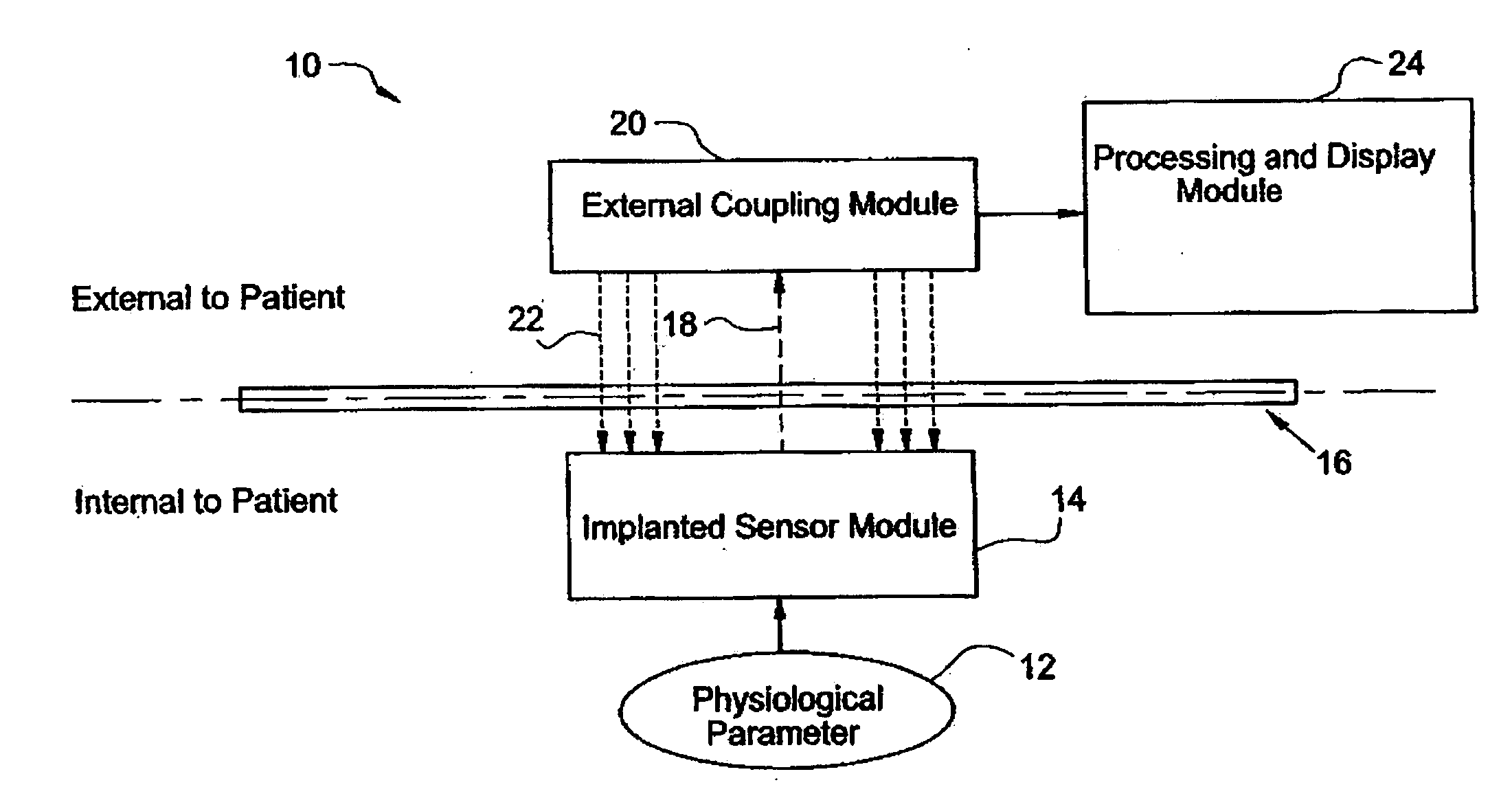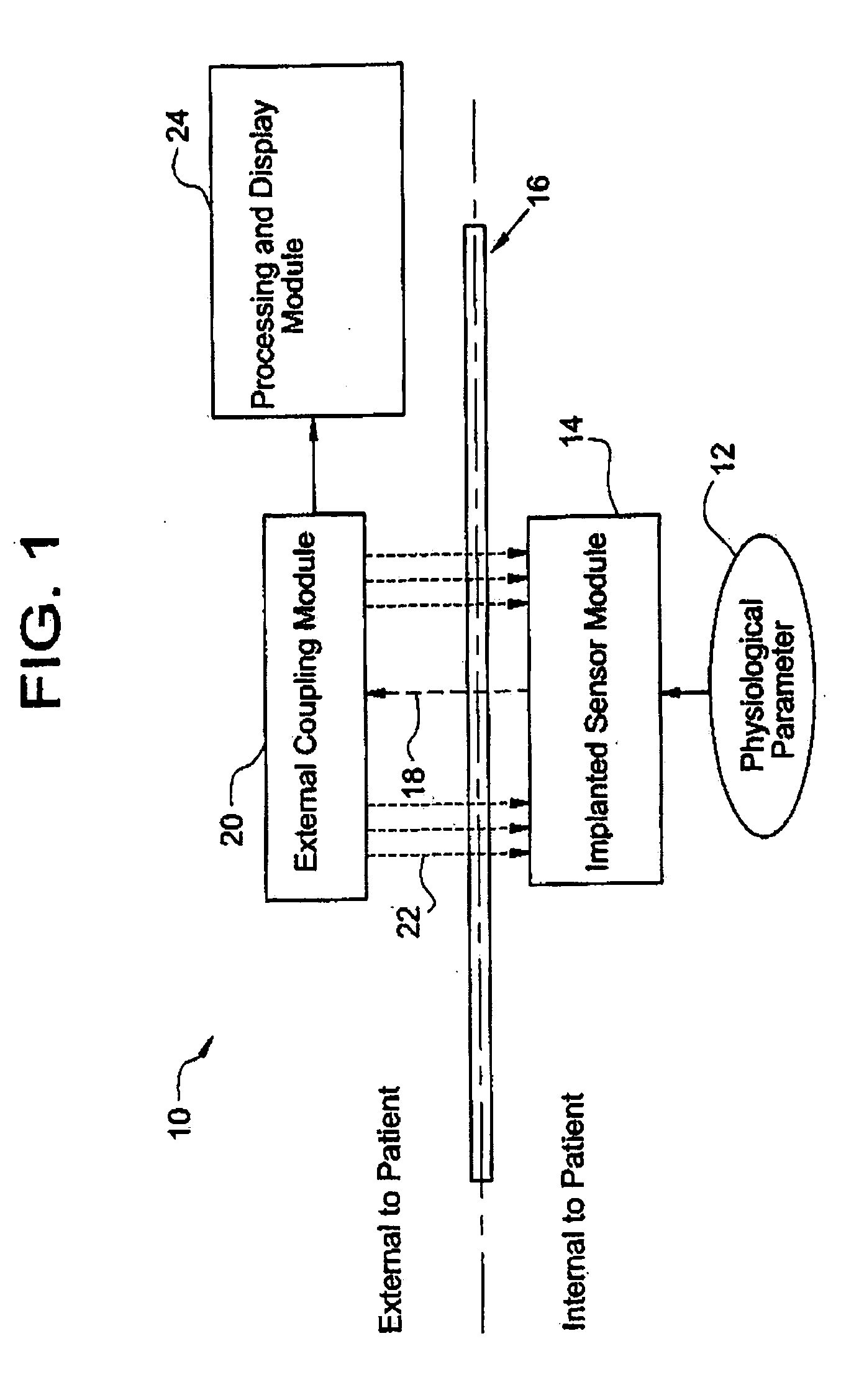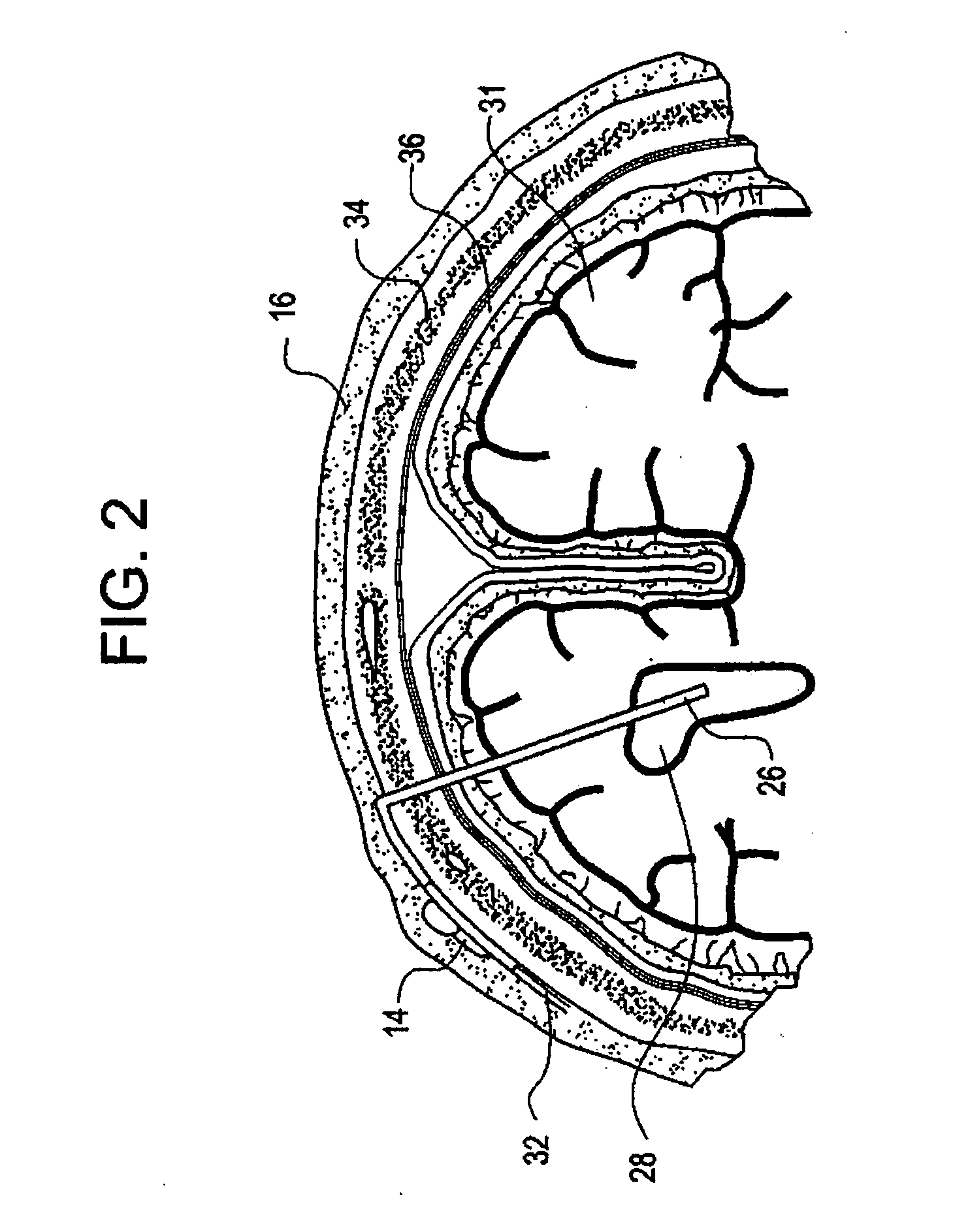System for transcutaneous monitoring of intracranial pressure
a technology of intracranial pressure and monitoring system, which is applied in the field of transcutaneous telemetry, can solve the problems of inadvertent pullout of percutaneous cables, mechanical failure of percutaneous cables, and second-degree damage to otherwise healthy brain tissue, and achieve the effect of small siz
- Summary
- Abstract
- Description
- Claims
- Application Information
AI Technical Summary
Benefits of technology
Problems solved by technology
Method used
Image
Examples
Embodiment Construction
[0044] The numerous innovative teachings of the present application will be described with particular reference to the presently preferred embodiments (by way of example, and not of limitation).
[0045] One embodiment of the present inventions is illustrated by FIG. 1, which shows a schematic block diagram of a transcutaneous monitoring system 10. A physiological parameter 12, such as intracranial pressure, is transduced by an implant 14. The implant is buried beneath the skin 16 of the patient. Information regarding the transduced physiological parameter 12 is converted to a digital form which modulates a near-infrared (NIR) emitter in the implant 14. The modulated NIR telemetry signal 18 emanates from the implant 14, permeates the skin 16 of the patient, and is detected by an external coupling module 20.
[0046] Power to the implant 14 is derived inductively through rectification of a transcutaneously-delivered time-varying electromagnetic field 22 which is applied by an external po...
PUM
 Login to View More
Login to View More Abstract
Description
Claims
Application Information
 Login to View More
Login to View More - R&D
- Intellectual Property
- Life Sciences
- Materials
- Tech Scout
- Unparalleled Data Quality
- Higher Quality Content
- 60% Fewer Hallucinations
Browse by: Latest US Patents, China's latest patents, Technical Efficacy Thesaurus, Application Domain, Technology Topic, Popular Technical Reports.
© 2025 PatSnap. All rights reserved.Legal|Privacy policy|Modern Slavery Act Transparency Statement|Sitemap|About US| Contact US: help@patsnap.com



